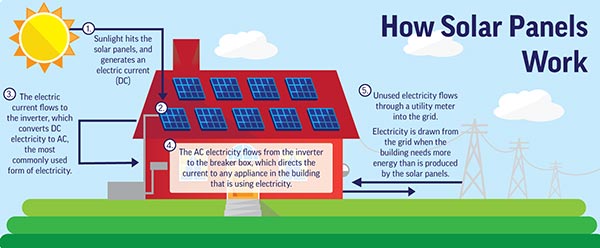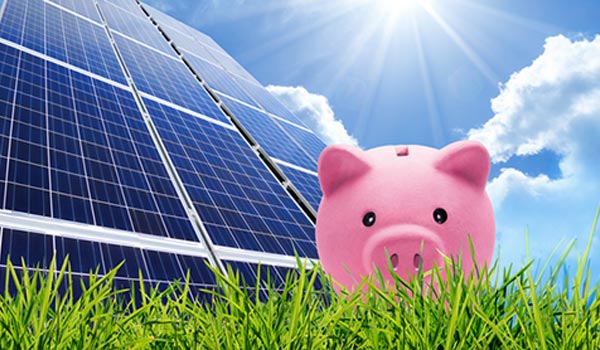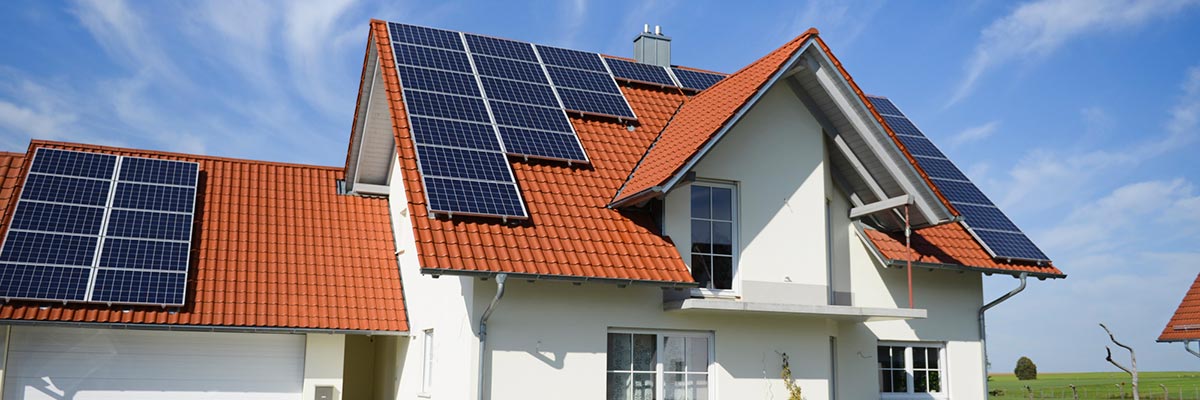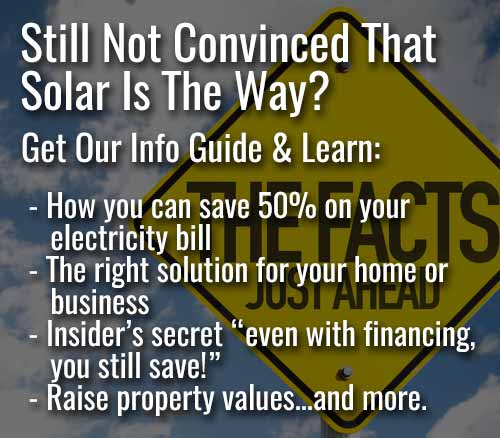Here in South Africa, some things are pretty certain: greedy politicians, bad roads, inconsistent sports teams - and an unreliable and expensive electrical grid system. Another thing we can be sure of – lots and lots of lovely sunshine.
Cold beverages and braai or shisa nyama in the warm sun is our life’s blood. At least there’s a few advantages in life for the typical Saffa, compared to our European and US counterparts!
Alternatives to grid electricity are becoming increasingly available to combat the expense and worry of our electrical grid, and avoid sitting in the dark during a blackout - with our music off, our beer warming up and our meat defrosting.
Many people are starting to look carefully at alternatives to Eskom. One of the best solutions – both financially and environmentally – is solar power installations. Will solar work for you, and will the solar installation be OK on your roof?
Let’s take a look at the most common questions people have about installing solar panels on the roof.
1. How Does A Solar Panel Installation Work?
The principals behind a solar panel installation are pretty simple, as you can see from this diagram:

2. Should I Get A Solar Photovoltaic (PV) Panel System Installed?
The simple answer for most money-conscious South Africans in an unstable economy is: yes, you should, because it’s cheaper and more reliable than grid-based electricity.
Many people are daunted by the prospect of solar installations because they think they’re too expensive. Fact is, the price of solar power has plummeted in recent years.
The price of producing power from a solar PV system used to be higher than electricity from Eskom, this much is true. The technology was still in development, manufacturing costs were high, and solar installations weren’t widely available or in demand. These factors resulted in costs beyond the reach of the average South African householder.
But progress has happened, and solar energy companies now have a variety of different installation packages for home or business owners – whether you want to power your whole house and get off the grid completely, or you want to power some appliances but use grid electricity as a backup.

Today a solar PV system can produce power at less than R1 per kWh, while Eskom charges around R1.50 per kWh.
Even taking into the consideration the costs of the original solar installation, the typical household will be able to save a large amount of money over a period of time (check out our solar savings calculator). Wider availability and lower costs of solar PV systems means that more and more South Africans use solar energy to either supplement the Eskom power grid system - or even go completely off the grid.
3. Is My Roof OK For A Solar PV Installation?
If you’re interested in solar PV installations for your home, one of the main questions you’ll ask (after the financial considerations, of course) is: Will my roof be OK if I put solar panels on it? Most roofing in South Africa is fine to install panels on, but let’s take a look at a few of the options.
Metal standing seam: The “standing seams” on many metal roofs make it easy to install solar panels. In most cases, the PV solar panels can be installed without making any holes in your roof – the installers use mounting systems that clamp onto the seams. Metal roofing is also great for insulation – so houses with metal roofs are great candidates for solar installation.
Clay tile roofing: Solar installers can work on clay tile roofs easily. Standard penetrating mounts can be used for solar installations on tile roofs, and some companies also produce solar panel mounts that are integrated into a clay or Spanish tile to make installation even easier.
EPDM rubber: Ethylene propylene dienterpolymer (EPDM) rubber is used on flat roofs - this is most commonly seen on commercial buildings, but some houses have this kind of roofing. Solar installers use a weighted mounting system (known as a ballast system), which means they don’t typically have to make holes in the roof. These installations are usually less expensive than rooftop systems with mounts that penetrate the roof material.
There are some roof types that are less compatible with solar. It is difficult for solar installers to work on slate and wood roofs, because these roof materials are brittle and can break. They require specialised mounting components and equipment – the installers can’t walk on the roof without damaging it, or even falling through! This means that installations on slate and wood roofs are more expensive.
Check out whether your roof is fine for solar PV installation:
|
Roof Material |
Property Type(s) |
Good for Solar? |
More Details |
|
Metal standing seam |
Residential |
Yes |
“Standing seams” make it easy to install without drilling holes in the roof. |
|
Clay tile |
Residential |
Yes |
Standard penetrating mounts can be used for solar installations on clay tile roofs. |
|
Spanish tile |
Residential |
Yes |
Standard penetrating mounts can be used for solar installations on Spanish tile roofs. |
|
Asphalt |
Residential |
Yes |
Standard penetrating mounts can be used for solar installations on asphalt roofs. |
|
Ethylene propylene diene terpolymer (EPDM) rubber |
Commercial, Residential |
Yes |
Typically flat, and systems can be installed using a ballast system with no roof penetration. |
|
Thermoplastic polyolefin (TPO) and polyvinyl chloride (PVC) |
Commercial, Residential |
Yes |
Typically flat, and systems can be installed using a ballast system with no roof penetration. |
|
Slate |
Residential |
No |
Slate tiles are brittle and can break easily, complicating the installation process and equipment used. |
|
Wood |
Residential |
No |
Wood tiles are brittle and can break easily, complicating the installation process and equipment used. |
4. OK, My Roof Material Works For Solar. What Else Should I Consider?
The material your roof is composed of plays a large part in your home’s suitability for solar – but there’s a few more things to ask to determine whether your home is built for solar.
-
Which way does your roof face?
Solar PV panels are most effective on a broad, north-facing roof in South Africa. An easy way to find out if a solar installation would be worthwhile for your roof is to find your house on Google Maps in satellite view, and compare it with the compass icon that should appear on the lower right of your screen.

Northeast and northwest facing panels will also work. Even if your house isn’t even slightly north-facing and you can’t get that kind of exposure on your roof, east and west exposures are still possible depending on shading. Also, if your roof orientation isn’t the best, you still have the option of mounting your panels on the ground or on another building like a shed or garage.
-
What kind of shade is on your roof?
Shade might affect the output of your solar panel installation. It might be from other buildings, mountains or hills, your chimney, or trees around your house. There’s not a lot you can do about mountains, other buildings or your chimney; but you could consider removing or trimming trees to create less shade.
-
How old is your roof?
Solar panel installations can last for 25 to 40 years, so make sure your roof is in good shape and won’t need to be replaced any time soon!
-
What size and shape is your roof?
Of course, a large square roof will be easiest to install PV panels. For each Kw of your system size, you will need about 9 square metres of roof space. Things like turrets, skylights and other features will affect the amount of space available for the installation.
-
What angle is your roof slope?
Flat roofs are optimal - at least for solar efficiency - they might get dirty and the rain won't clean them too well on a flat surface. Many South African houses have some sort of slope to the roof. If your roof is sloped, the best angle is between 30 and 40 degrees. The minimum for efficiency is 15 degrees, and the maximum angle is 40 degrees.
-
Well, this sucks – my roof isn’t good for solar installation!
Don’t give up just yet! You can install a ground mounted solar panel system or a solar panel carport elsewhere on your property. There’s always a way to take advantage of the fantastic South African sunshine and help power your house the modern way!
If you want to see how much you can save by going solar, check out our solar savings calculator.
Not sure which solar system is right for you, get a quote for a solar installation.
Think you can't afford to go solar? Think again, you can still save over 50% on your energy bill, even with solar financing.



